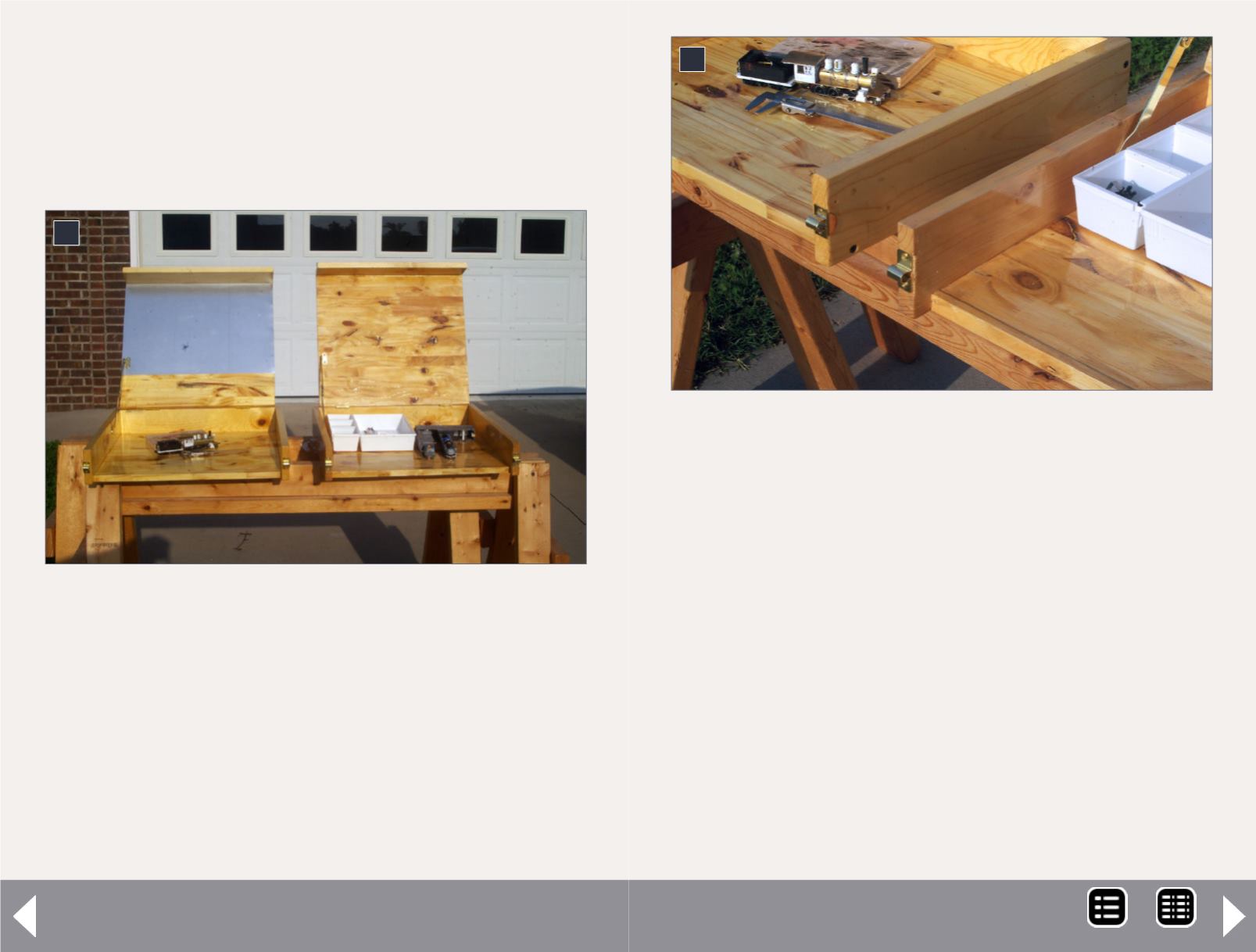
4
4. Here are both workbenches finished, side-by-side.
I used different hardware on them, since I was using
whatever I had on hand for the first one (left), and
purchased everything new for the second.
When closed, there is 2” of vertical clearance between
the top and bottom. That’s enough for some HO rolling
stock to sit upright, and pretty much anything to lie on
its side. It’s also enough room for most hobby paint
bottles and most freight car boxes, which make great
parts holders.
Portable workbench - 3
hinges, two barrel bolt latches, and one folding support. I
already had plenty of drywall screws on hand, but if you’re
buying them, you’ll need some at least 1½” long. I also chose
to varnish both workbenches to protect the wood and make it
a little prettier. Paint would also work well, though no finish is
needed for the workbench to serve its purpose.
5
5. I chose not to add the sheet metal to the second
workbench. For one thing, my friend has access to a
better variety of sheet metal at much better prices, and
with better tools for cutting it to size. Also, this way he
can decide what he wants to put there. The options are
nearly endless – a dry-erase board, cork, a variety of tool
holders, a neatly painted railroad logo or a photograph, or
anything else someone might find useful.
I am confident the one on the right (and maybe both of
them) will hold water if needed. While that may seem
pointless, I can see the potential for spilling paint,
glue, water, or some other liquid, and knowing it will
not leak out onto whatever the workbench is sitting on
will be quite reassuring.
MRH-Oct 2014


